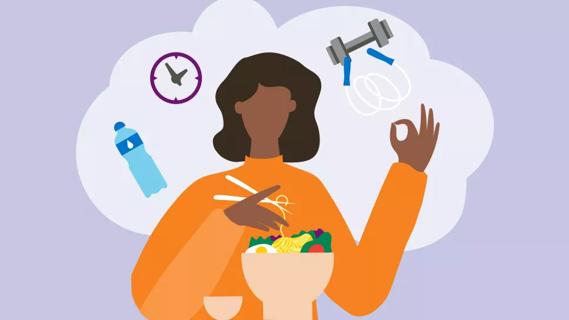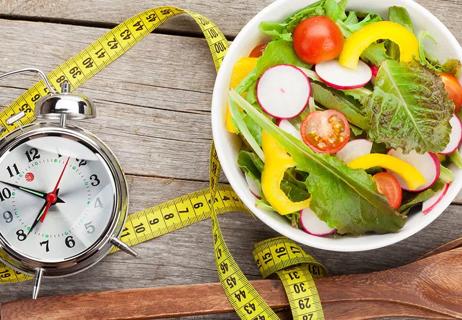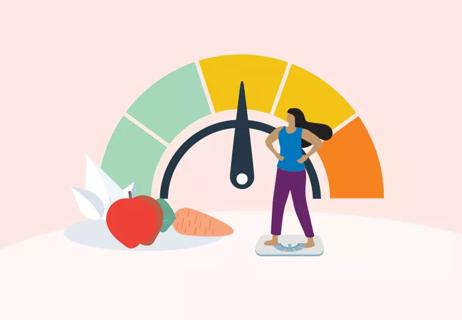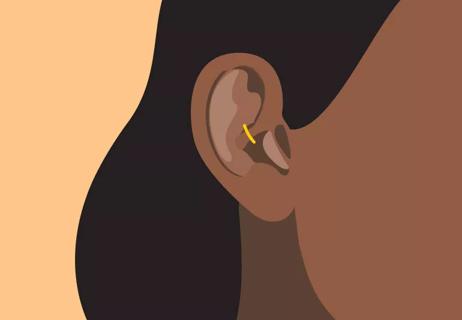Exploring the role of diet and calorie reduction

If you want to lose weight, wouldn’t it be great to ditch your calorie-tracking apps and focus solely on your workouts? Unfortunately, it’s not that simple.
Advertisement
Cleveland Clinic is a non-profit academic medical center. Advertising on our site helps support our mission. We do not endorse non-Cleveland Clinic products or services. Policy
Exercise while ignoring your diet just isn’t a good weight loss strategy, says exercise physiologist Katie Lawton, MEd.
“To lose weight, you need to burn more calories than you consume or eat fewer calories than your body uses each day,” says Lawton. “If you don’t have a caloric deficit, you will not lose weight.”
On the flip side, it also depends on the type of exercises you do. Cardiovascular exercises like running, walking or biking are important, but you also need some resistance training to fuel your weight loss efforts. Here are some other recommendations to help you stay on track:
Sorry to break it to you, but you do need to track calories. Doing so will give you the insights you need to lose weight.
The good news is that it’s easier than ever before with apps like MyFitnessPal, Lose It! and FatSecret. These apps do a lot of heavy lifting when it comes to calculating calories. For improved accuracy and to also make life easier, food scales can be beneficial.
“Some apps also track exercise to help you understand what your caloric deficit is each day,” she says. “Once you see the data, you may be amazed at how much you’re overeating or how many calories you’re consuming.”
For example, a 20-ounce bottle of soda contains about 230 calories and an average alcoholic beverage contains between 100 to 200 calories. Those are empty calories that your body doesn’t need and they really start to add up over time. However, moderation is key to making sure you reach your goal. Consult with your doctor or dietitian to figure out the perfect plan to help you on your weight loss journey.
Advertisement
This might come as a surprise, but hear us out. Throw your scale out because you won’t be needing it.
“It may be difficult at first, but don’t focus on the scale,” she says. “Rather, pay attention to how you’re feeling and what your energy level is. Those are key factors, especially at the beginning.”
Just when you think the pounds won’t come off, they will. Your scale number may not change when you get on it and you may add muscle mass and muscle weighs more than fat. It’s more about how your body feels, how your clothes fit and how you’re perceiving yourself.
You may find that testing body composition either by 7-Site Skinfold or Bod Pod is helpful to determine if you are gaining lean muscle mass with weight loss. If you find that you are not increasing lean muscle mass, you may need to change your workouts or even your diet.
“If you’re using a handheld or scale method for determining body fat, that’s fine,” she says. “Just know that they are not entirely accurate. However, they can be consistent, so if you are going to use these modes, then make sure you are testing at the same time of day each time.”
The American Heart Association recommends getting 150 minutes per week (30 minutes, five days a week) of moderate-intensity activity minimum.
If you are meeting this and are still having trouble losing weight, then the next step would be to increase either the intensity or duration of the exercise.
Whether you walk, bike, jog or run, try to work in that 150 minutes of exercise. Even if running or biking isn’t your cup of tea, with so many different online exercise options available to us today, you’re sure to find one that you love and can continue doing.
“If you’re having trouble getting motivated to exercise, try to focus on getting at least 10 minutes of consecutive exercise at a time,” says Lawton. “Don’t worry about how fast you’re moving. Just move and keep moving.”
The most common misconception about strength training is that you’ll get bulky. On the contrary, strength training will help you the most when it comes to losing weight and more importantly, keeping the weight off. That’s because you will burn more calories throughout the day by increasing your resting metabolic rate.
If you’re a member of a local gym, ask one of the trainers to show you some strength-training exercises or help you create a routine. You could use free weights, machines, or both.
If you prefer to work out in your own home, you can also buy some dumbbells and a weight bench to use at home. The good news is that there is a plethora of free (and paid subscription services) content available on the internet to learn about proper form and how to use weights properly.
Advertisement
To help reach your goal, try a heart-rate monitor. This can help guide you in knowing how intense your workouts are. However, just know that “fat burning zone” is actually at rest. You burn more carbs as the intensity increases during cardiovascular exercise.
Heart rate monitors can be stand-alone devices or you can find them built into some fitness trackers. They are generally more accurate than an exercise machine’s built-in monitor.
“If you’re ready to start, just be sure you’re healthy,” says Lawton. “Consult with your doctor and once you have a clean bill of health, go for it.”
Advertisement
Learn more about our editorial process.
Advertisement

Actively choose healthy habits not only when it comes to food and nutrition, but also physical activity and your mental health

Trying fad diets and skipping meals won’t do you any favors

Wearing this undergarment for too long will do more harm than good

Quick weight loss is possible, but it’s not sustainable

You can lose 15% of your body weight, plus lower your heart disease and diabetes risks

A safe and effective surgery that shouldn’t be considered only as a last resort

Focus on physical activity and foods that pack a nutritional punch to help you lose weight

Skip this unproven, unsafe and unregulated weight-loss practice

Type 2 diabetes isn’t inevitable with these dietary changes

Applying a hot or cold compress can help with pain